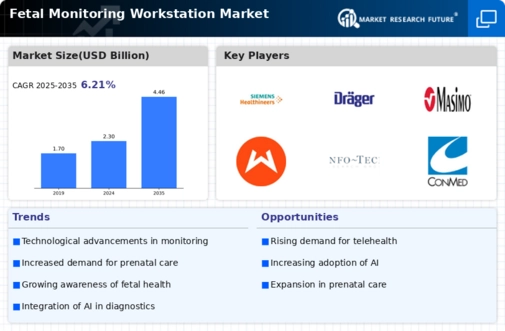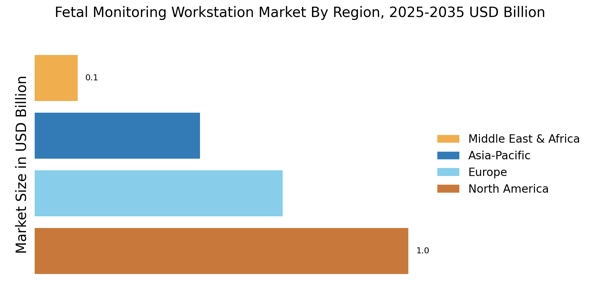The Global Fetal Monitoring Workstation Market is a dynamic landscape characterized by numerous players striving to innovate and enhance the quality of maternal and fetal care. The market is influenced by technological advancements, increasing awareness about maternal health, and a growing demand for continuous monitoring during labor and delivery.
Competitors are utilizing various strategies such as mergers and acquisitions, partnerships, and product innovations to gain a foothold in this rapidly evolving industry. Additionally, the shifting regulatory landscape and the push towards incorporating advanced data analytics and connectivity in monitoring systems are factors shaping the competitive dynamics within the market.
To remain competitive, companies are also focusing on developing integrated solutions that streamline workflows for healthcare professionals while ensuring the highest levels of safety and efficiency. Siemens Healthineers has established a notable presence in the Global Fetal Monitoring Workstation Market, driven by its commitment to excellence in medical technology.
The company’s strengths lie in its robust portfolio of innovative monitoring solutions that focus on enhancing the accuracy of fetal assessments. Siemens Healthineers is known for its cutting-edge technologies, such as advanced signal processing algorithms, which are essential for reliable readings during labor.
Its extensive research and development initiatives allow the company to remain at the forefront of innovation, translating to enhanced product offerings that cater to the evolving needs of healthcare providers.
Furthermore, Siemens Healthineers benefits from a strong global distribution network, enabling it to penetrate various markets effectively. The company’s emphasis on quality and reliability resonates well with medical professionals, bolstering its position within the fetal monitoring sector.
Draeger is another key player within the Global Fetal Monitoring Workstation Market, recognized for its strong commitment to enhancing patient safety and healthcare outcomes.
The company leverages its extensive expertise in medical technology to deliver solutions that meet the demands of its clients in obstetric care. Draeger's fetal monitoring systems are characterized by user-friendly interfaces, comprehensive data analytics capabilities, and seamless integration with existing hospital infrastructures.
This focus on usability helps ensure that healthcare professionals can operate these systems effectively and provide timely interventions when needed. Additionally, Draeger invests heavily in research and development, ensuring that its products incorporate the latest advancements in monitoring technology.
The company emphasizes collaboration with healthcare practitioners to tailor its solutions to real-world clinical challenges, fostering a reputation as a trusted partner in the field of fetal monitoring.


















Leave a Comment